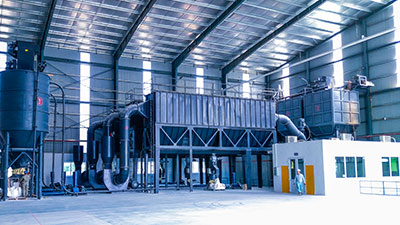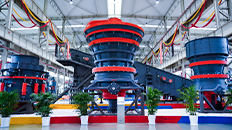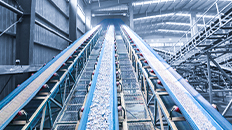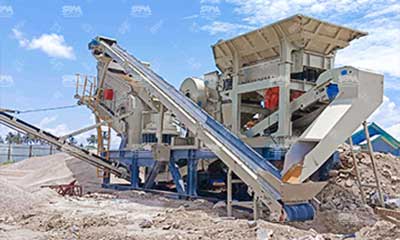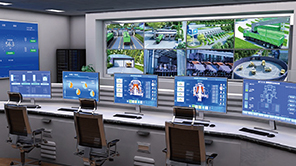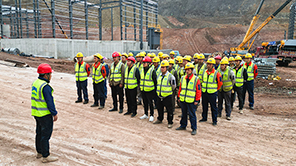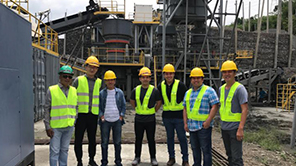Summary:In recent years, with the rapid development of construction and infrastructure construction, more and more investors consult for limestone powder production. So what equipment is needed for limestone grinding? What is the process flow?
Limestone is the main raw material of cement, concrete aggregate, etc. it can also be used as a filler to produce calcium carbide, soda ash, bleaching powder, etc. in addition, it can also be used as building materials and refractory materials. Therefore, the investment in limestone grinding production line is called a promising investment project by many people. Especially in recent years, with the rapid development of construction and infrastructure construction, more and more investors consult for limestone powder production. So what equipment is needed for limestone grinding? What is the process flow?



Limestone Grinding Process
The limestone grinding process mainly includes two types:
Open circuit process: the process of material passing through the mill as finished product for the next step of operation;
Closed circuit process: when the material discharged from grinding mill after one or several levels of separation, the fine particles are used as the finished product, and the coarse particles are returned to the grinding mill for re-grinding.

The open circuit process is relatively simple, with the advantages of less equipment, less investment, and simple operation. However, because the materials need to reach the fineness requirements before they can be discharged, over-grinding is easy to occur, and the finely ground materials easily form a cushion layer, which prevents the coarse materials from further grinding, greatly reduces the grinding efficiency and increases the power consumption.
Therefore, most limestone powder manufacturers currently choose a closed circuit process, which can reduce the phenomenon of over-grinding, improve the efficiency of the grinding mill, and reduce power consumption. In addition, the limestone powder produced by the closed-circuit process has uniform particle size and is easy to adjust, which can meet the requirements of different fineness.
While designing a complete limestone grinding plant, there are several steps:
First of all, we should consider about the max feed size of limestone to be processed. The feed size of limestone decides if we should adopt crusher and decides the feed opening of crusher we choose.
Secondly, we should consider about the capacity, output size and power etc. These factors decide which model of grinding mill we should adopt. For different customers, their production scales are different, so the models of grinding mills might also be different.
Thirdly, after determining the model of grinding mill, the feed opening of grinding mill is fixed. And the final products discharged from crusher should be smaller than the feed opening of grinding mill. In this case, we should consider about the matching of crusher and grinding mill.
Which Grinding Mill is Suitable for Limestone?
In the above mentioned limestone grinding plant, grinding mill is the core equipment that directly decides the quality and fineness of final limestone powder. And the efficiency of grinding mill also affects the effect of the whole plant, so we should adopt proper limestone grinding mill.
Vertical Roller Mill

Vertical roller mill is suitable for the large-scale processing of non-metallic mineral powders below 1250 mesh. Its large-scale and energy-saving effects are significant. It has simple operation, convenient maintenance, and simple process layout and has the advantages of small area, low investment in civil construction, low noise, and good environmental protection.
Raymond Mill

Raymond mill has stable performance, convenient operation, low energy consumption and large adjustable range of product particle size, low investment cost, convenient maintenance and some other advantages, widely used in many industries.
Ultrafine Mill
Ultrafine grinding mill is a kind of equipment to process fine powder and ultrafine powder. It has strong technical and cost advantages in the field of mechanical ultrafine grinding and mainly used for medium and low hardness of non-flammable and explosive brittle material processing, widely used in the field of industrial grinding.
Limestone Grinding Mill Working Principle
Limestone grinding mill is composed of grinding host, grading screening, product collection and other parts. The host adopts the overall cast base structure and can adopt the shock absorption foundation. The grading system adopts the mandatory turbo grade structure, and the collection system uses pulse collection.
Big materials are crushed by jaw crusher to required particle sizes, and carried by bucket elevator to the storage hopper, and care fed evenly and continuously by vibrating feeder into the main frame for grinding. The ground powder are carried by the airflow from the blower to the classifier to be classified, the particles which meet the fineness enter the cyclone collector through pipe and are separated and collected there. They are discharged at the discharging valve to become finished products (the fineness can reach to 0.008mm). The airflow is sucked to the blower by return pipe on the top of cyclone collector. The whole airflow system is a sealed circulation, and is circulated under positive and negative air pressure.



